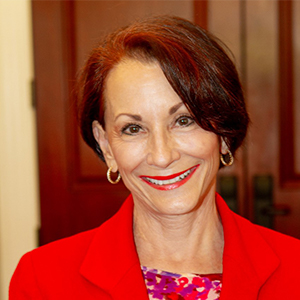The bonds that exist between your nonprofit and its mission and your donors are precious. The stronger the bonds the more your donors are encouraged to support you through the years. Those bonds are created and strengthened through your nonprofit’s culture of gratitude. Let’s take a more in-depth look at your nonprofit culture.
First, let’s agree on the definition of culture. According to the Merriam Webster Dictionary, culture is the set of shared attitudes, values, goals, and practices that characterizes an institution or organization. As a leader of your nonprofit, you must create a culture of gratitude to grow the philanthropy of your stakeholders. That culture must permeate all that your nonprofit does.
Each one of these attributes deserves your attention and commitment to instill in your staff, volunteers, and Board of Directors. Each of these attributes represents your nonprofit. Some more than others but nonetheless, they reflect to your donors the consistency of what your nonprofit stands for and believes in.
Shared Attitudes
The first attribute of attitude is probably the most important because it is most on display to a stakeholder. It is a feeling the stakeholder gets when they walk in the door of your office, attend one of your events, visit a program, talk with staff member. Bottom line, it is all that your nonprofit does that communicates to another person the attitude embodied in carrying out the mission. Let’s take a few examples of what communicates “attitude” to a stakeholder.
A long-time donor comes into the nonprofit’s office for a meeting and is warmly greeted by name by the person sitting at the reception desk. The receptionist makes conversation with the donor as he/she is escorted to the meeting. The receptionist introduces the donor to those in attendance. When the donor leaves after the meeting, he/she is walked to the door and thanked for attending by the meeting host. The receptionist adds a goodbye as well. Later, the donor who attended the meeting receives an email from the host thanking them for attending and sharing how important the meeting outcome was to the nonprofit.
A long-time donor comes into the nonprofit’s office for a meeting and is asked by the person sitting at the reception desk what they would like while on the phone with a friend. The donor says he/she is here for a meeting and the receptionist waves them to the hallway. The donor walks along the hallway and sees others working but no one acknowledges hims/her or shows any interest in the person. The donor arrives at the meeting room and sits down to join the others and receives a warm welcome. When the donor leaves, he/she is thanked profusely for attending.
Both these scenarios convey an attitude of gratitude but not by everyone in the organization. Which is prevalent in your nonprofit? Changing it will require significant communication and feedback with staff and volunteers. An attitude of gratitude needs to be extended across every aspect of your nonprofit.
Shared Values
Values are oftentimes defined by the nonprofit leadership and communicated in writing to staff, volunteers, and the Board of Directors. What one must ensure is the values are on display by all these people. It is a superlative way to communicate to others the culture of the nonprofit. Values can include so many things that drive your nonprofit – integrity, loyalty, transparency, gratitude, and the list goes on. Whatever the values of your nonprofit are it is important that all the players know them and live them in the context of the nonprofit.
By way of example, here are two scenarios communicating the nonprofit’s value of gratitude to stakeholders.
The Executive Director has been called by a donor who says they are interested in making a year-end donation of $50K. The Executive Director expresses warm thanks and describes the impact this is going to have on the nonprofit’s mission. The donor says he/she would like to bring the check by the office and the Executive Director offers to meet the donor for lunch and bring along a few colleagues. The donor accepts the invitation, and the Executive Director gets to work arranging the luncheon, who will attend and what will be communicated to the donor in terms of gratitude and mission impact.
In another nonprofit, the Executive Director has been called by a donor who says they are interested in making a year-end donation of $50K. The Executive Director expresses his/her gratitude to the donor. The donor says he/she would like to bring the check by the office and the Executive Director says that will be fine. No definitive time is set for the donor to stop by the office. When the donor arrives, the Executive Director is in a meeting, and the receptionist takes the check and thanks the donor.
Oh my! What is the expression of gratitude felt by the donor in each of these scenarios? How does your nonprofit express its value of gratitude? The actions of the Executive Director set an example for valuing gratitude throughout the nonprofit.
Shared Goals
Goals are most often defined in the context of the mission. Goals can include clients served, outcomes achieved by the clients, revenue raised, programs offered, etc.
Now consider an additional goal in the context of culture related to gratitude. The goals you define for the expression of gratitude must be lived out in day-to-day operations just as the other goals. All these goals must be shared by all who make up the culture of your nonprofit. Sharing goals across the spectrum will engender a strong and committed team.
If one staff member’s goal is to earn a paycheck and another staff member’s goal is help clients improve their performance and show gratitude to all who are involved in the nonprofit, the difference is going to be noted by those who observe your operations and talk with staff members. This will be particularly apparent to volunteers. Keep in mind that your volunteers should or could be some of your best donors. Volunteers are also an excellent networking tool – just make sure your volunteers are singing your praises and not the other way around.
If one Board member is on the Board to check a box with no commitment to helping the nonprofit achieve its goals, it will be noticed by other Board members and influence their attitudes. It will also be noticed by staff, volunteers, and donors over time and influence their commitment to the nonprofit and the integrity of said nonprofit.
Shared Practices
Policies and procedures are an absolute must to put consistent practices in place that ensure your nonprofit culture overflows with gratitude. For example, having a policy describing the many ways of thanking donors, volunteers, and Board members is an excellent starting point. Following policies and procedures ensures staff and volunteers have the same expectations and misunderstandings are minimized.
Keep in mind gratitude isn’t just about thanking donors. It is expressed throughout all the nonprofit does. Express gratitude to your clients, CPA, auditor, venue for your fundraisers, host site for your programs, other nonprofits who add to your nonprofit’s mission, media who promote your nonprofit, etc.
Implementing a donor management system offers efficiency in tracking, reporting and analysis of how donors are responding to your nonprofit’s expression of gratitude. And all that information can be shared with staff and the Board of Directors as a way of communicating about a job well done, the difference they are making, and a vibrant culture of gratitude they have created and sustained. And if the data indicates donations are off track, it allows your nonprofit to dig deeper to find the necessary actions to be taken to correct the issues.
Creating a strong culture takes work and must be continually finetuned through actions and words. A culture will naturally make its own way into an organization and that culture will be inconsistent, confusing, and frustrating unless you act. You as nonprofit leaders must consciously define, live, and manage the culture you aspire to for your organization and bring your entire staff and volunteer base with you on an incredible journey of gratitude.





